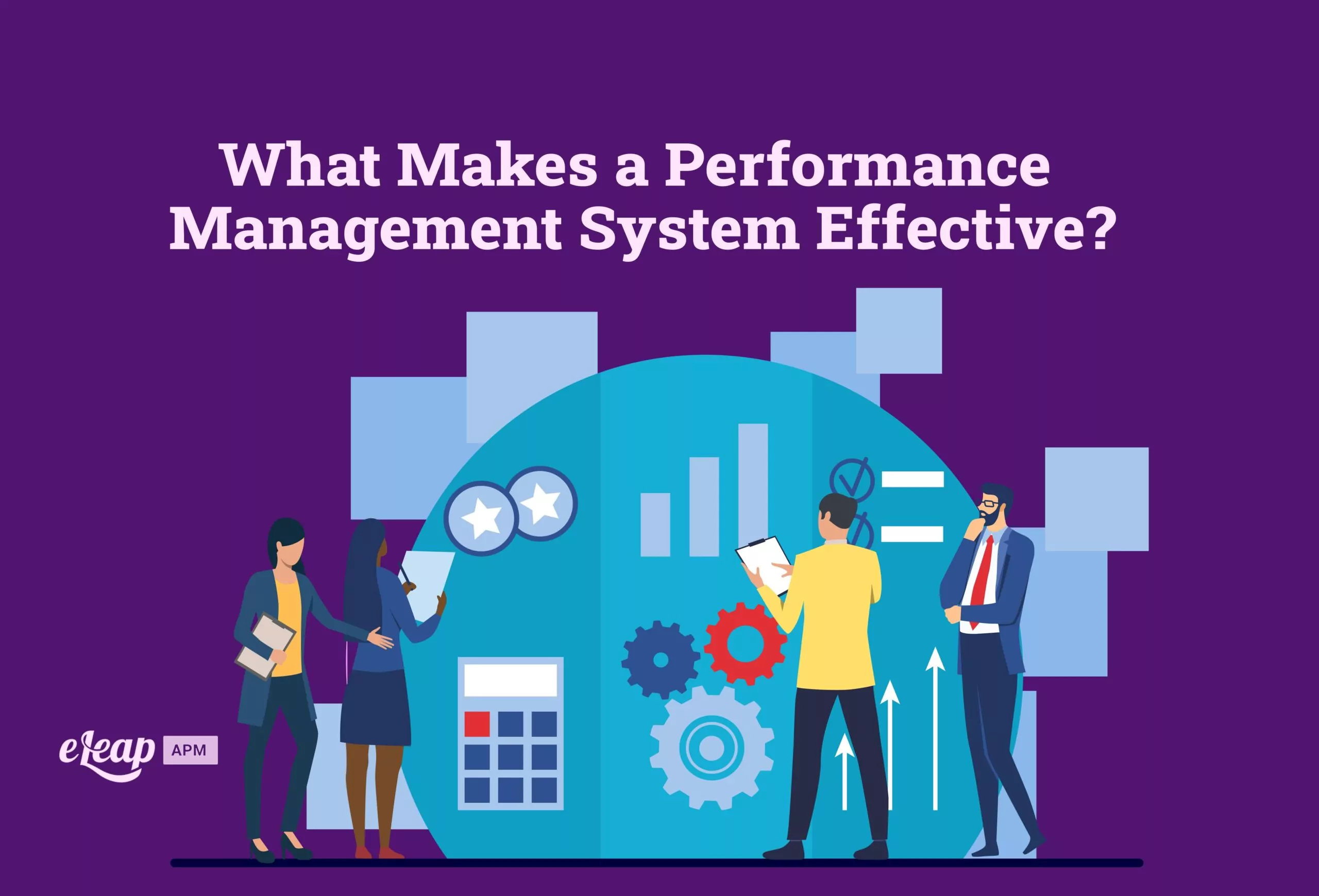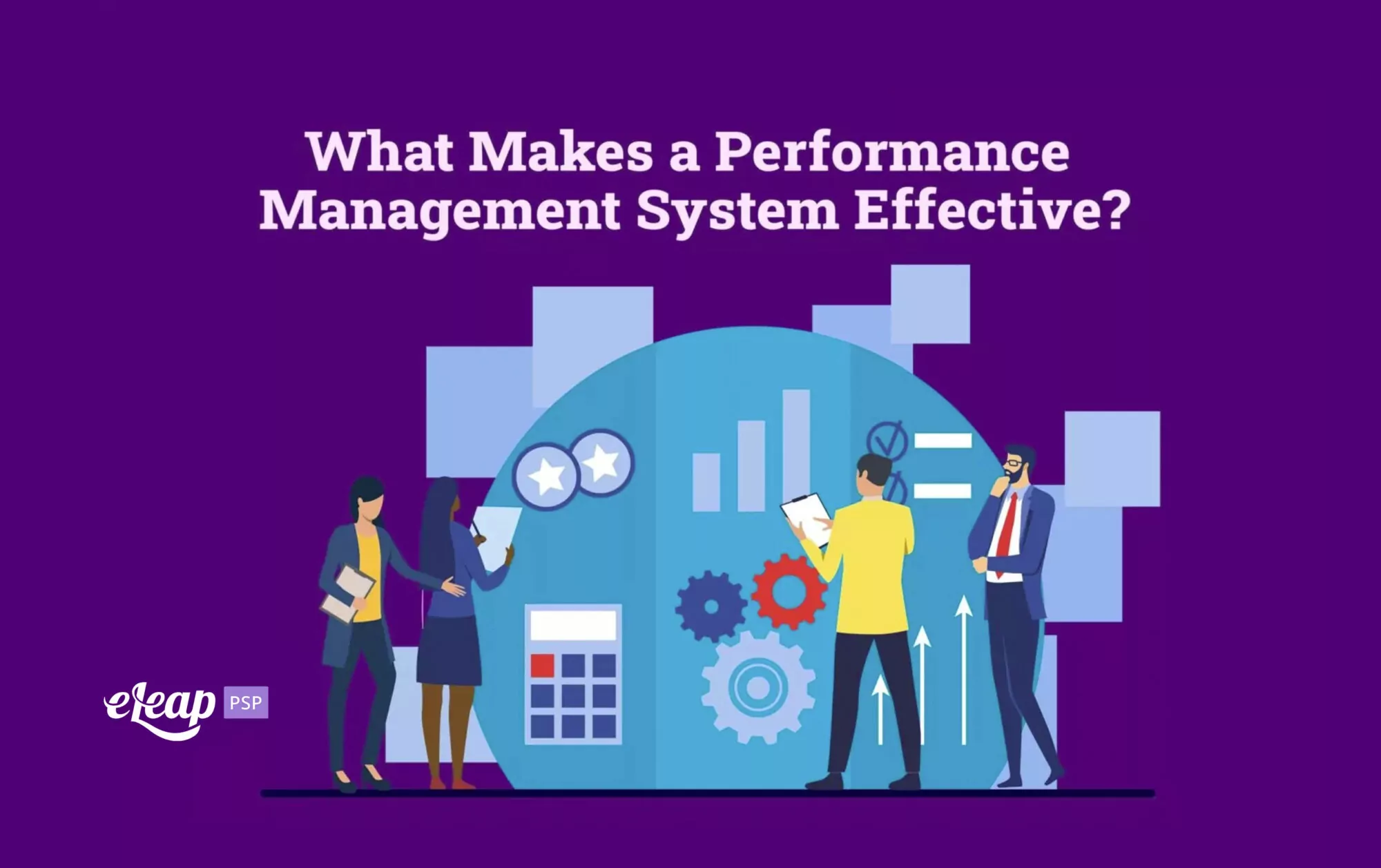What Makes a Performance Management System Effective?

It’s important to understand the elements that make a Performance Management System platform effective. Selecting any random PMS platform and expecting it to work with your team is counterproductive. There should be an understanding of what makes a PMS platform effective for your organization specifically.
What works for one organization doesn’t necessarily work for another. You need to analyze what your team needs and then make your choice accordingly.
If you’re thinking about deploying a PMS platform or replacing the one you have, this article is for you. In the following sections, we’ll outline what makes a performance management system effective.

What Should Your PMS Platform Do?
You first need to understand what an effective PMS platform can do. An effective performance management system should enable the following:
- Set up and align team goals with the goals of your organization
- Collect performance reviews with 360-degree feedback – 360 performance reviews
- Export performance data
- Recognize and highlight employee performance
- Inform management about team member performance
- Encourage conversations between management and team members
- Enable continuous snapshots and feedback loops
A PMS platform will use these functions to measure and ensure employee success. This makes success possible for the organization as a whole.
It’s understood that a PMS platform allows organizations to monitor the performance of employees. These platforms also ensure that team member goals align with the goals of your organization. Organizations benefit when team members have goals that are in line with a corporate objective.
With the right PMS platform, organizations can stop spending so much time on annual performance reviews. These platforms allow for the continuous monitoring of performance, which allows for a greater focus on employee development.
Now that you understand these elements, let’s examine what makes an effective PMS platform.
What to Expect from An Effective PMS Platform
The performance management software of today is all about improvement and goal achievement. This is a stark contrast to the old ways of promoting bonuses and pay increases. Let’s take a look at some of the main functionalities of these platforms:
Align Individual Goals with Organizational Goals
A PMS platform will deliver fair reviews periodically and also align team member goals with corporate vision. Through this process, employees, organizations, resources, and systems can work together to meet strategic objectives.
These platforms will also set targets and measure performance with various metrics. This allows an organization to gain an immense competitive advantage through strong performance.
Collect Performance Reviews and 360-Degree Feedback
When you use periodic and continuous reviews, it makes it possible for management to recognize that team members might miss performance goals. This allows management or HR to make course corrections to get team members back on track.
Gaining 360-degree feedback is also important. When you can get the opinion of management and peers together, it allows for several different viewpoints regarding performance.
Export Performance Data
An effective PMS platform unites an entire organization by tracking an individual’s performance and contribution to the overall strategic goals. This allows everyone to see their overall impact at the corporate level.
When team members can take ownership of their goals by deciding the metrics, there is a sense of commitment and responsibility. This will make them feel more in control and that management isn’t forcing their will on them.
These metrics will allow them to recognize exactly how they’re helping the organization to grow and succeed. When this is possible, team members feel much more valuable to the organization.
Recognize Employee Performance
When teams can set stretch goals that are ambitious but not mandatory, this allows employees to strive for goals without feeling pressured. This will eliminate stress and keep them from setting impossible goals.
The main goal won’t be to get better numbers than the previous quarter. The current business environment is not conducive to these types of results.
Inform Managers About Performers
With a performance management system, an organization can regularly track metrics and measure performance. This ends up bringing managers closer to their teams and helps them understand why they’re not hitting their goals. Everyone is more engaged overall.
Managers turn into mentors, team members collaborate with peers to complete their tasks, and development needs are identified. This also promotes an atmosphere of sharing ideas and thoughts, and the overall process improves.
Encourage Conversation
Performance doesn’t get side-lined and is actually rewarded when team members take it seriously. Simply showing up to work every day stops being the sole metric upon which employees are judged. This builds morale and improves the commitment of your team overall.
When performance is recognized and rewarded properly, higher performance becomes second nature and not just a rare event. On the other hand, catching bad performance is important as well.
However, it’s not about punishment or demoting anyone. It’s more of an opportunity for learning and success. This leads to an all-around improvement and makes better performance possible. This is especially important when it comes to newer work-from-home and remote environments.
Managers can also take over control of their team’s performance. This helps with allowing under-performers to achieve steps to make it to the next level. In the end, these team members end up growing into leaders, mentors, and role models. They end up becoming real leaders that look for ways to challenge themselves and improve their success.
Enable Snapshots and Feedback Loops
Your organization can access measurements of performance through the most important indicators with no delay in sharing data. This influences the outcome and performance of team members that are on the go. Using quantitative and qualitative metrics is incredibly important for assessing performance on a regular basis.
Meeting standard levels of performance requirements needs to be managed alongside the goal of continuous performance. All of this is made simple with the right PMS platform.
In closing, an efficient PMS platform makes it possible for individuals to align their goals with those of corporate. Developmental opportunities are made available to team members and managers. Additionally, this also establishes a fair environment that prioritizes performance. With these elements in place, your PMS platform is sure to take your organization to the next level. The eLeaP People Success Platform, which includes a continuous performance management system, provides organizations with powerful options to attract and retain high-caliber team members.